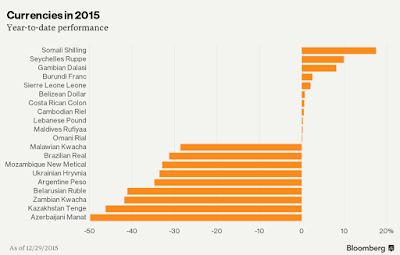In a recent comment on R&D Expenditure across the OECD countries, WEF has referenced Irish data on R&D spending as % of GDP at 1.58% which refers to 2012 full year results.
Which is surprising, given that we now have 2014 data available per Eurostat (http://ec.europa.eu/eurostat/documents/2995521/7092226/9-30112015-AP-EN.pdf/29eeaa3d-29c8-496d-9302-77056be6d586) which puts our R&D spending at 1.55% of GDP in 2014.
Irish GDP in 2014 in current prices terms was 16.07% above Irish GNP. The same gap in 2004 was 17.26%. Which means that adjusting for this gap, Irish R&D expenditure as a share of GNP was 1.38% of GNP in 2004, rising to 1.80% in 2014.
Thus, in 2004, Ireland ranked as 12th country in the EU in terms of R&D expenditure ‘intensity’ by GDP metric, and 11th by GNP metric, both metrics were at exactly the same ranking places in 2014.
Here is a chart showing longer evolution of the R&D expenditure series from OECD:
Overall, Irish R&D expenditures remain below the desired levels in absolute terms, both relative to the GDP and the GNP bases.
Eurostar provides a handy breakdown of R&D spending by origin across Private sector, Government sector, Higher education and non-Profit.
Few things stand out for Ireland:
- As a share of R&D spending, business enterprise sector appears to be carrying its weight in Ireland.
- Government expenditure on R&D is extremely weak in Ireland, though one has to wonder what on earth can Irish Government research, given the quality of our state institutions.
- Higher education sector R&D spending in Ireland is ranked 20th in the EU - a ranking that is heavily influenced by a massive share of business enterprise spending of total R&D expenditure.
- Apparently, there is no private non-profit spending whatsoever in Ireland.
Key to the above is, however, the nature of business enterprise spending. Per Government own statistics, in 2012, roughly 300 firms accounted for almost 70% of total R&D expenditure in Ireland. Just 107foreign firms spent more than EUR2 million on R&D per annum in Ireland and these account for 88% of the total R&D spent by MNCs in Ireland, or well over 70% of the total business enterprise R&D spend.
Here’s Finfacts take on the hype: http://www.finfacts.ie/irishfinancenews/article_1028789.shtml.
In other words, stripping out MNCs with their R&D activity booked through Ireland mostly reflective of tax optimisation rather than actual research, one wonders just how much exactly does R&D contribute to our GDP or GNP and just how much of the failures of Irish R&D spending are down to quantum of spend as opposed to quality of spend? Problem is: we do not know. All Government research on the matter, including research by the likes of the OECD (based on Irish Government-supplied data), is probably heavily biased by the insiders dominating analysis.
Take the following two charts from OECD latest report on Science and R&D (http://www.oecd-ilibrary.org/science-and-technology/main-science-and-technology-indicators_2304277x)
So in the first chart, Ireland is above EU and OECD averages in terms of researchers employment intensity, but in second chart, Ireland is below EU and OECD averages in terms of R&D output intensity (by one metric).
Which begs a question - is this difference down to quality of researchers or down to type of research (e,g. non-patentable fields of sciences and humanities) or down to classification by, say MNCs, of some business & admin personnel as research personnel for tax purposes and to create a smokescreen of ‘organic’ as opposed to tax channeling activity in Ireland?
Who knows… But in 2011, per OECD data, 71.1% of total R&D expenditure by enterprises in Ireland accrued to foreign affiliates (the MNCs). Subsequently, we stopped reporting such data. It is worth noting that this does not include companies that redomiciled into Ireland via tax inversions, adding which to the pile would probably shift this number closer to 90 percent.
In simple terms, aggregate spending figures tell us very little as to the nature of Irish R&D activities or their effectiveness. The real data is being hidden from our view by commercial secrecy that conveniently obscures just what exactly is happening in the economy and in our research sectors. May be, the knowledge economy of Ireland is a de facto a convenient deus ex machina for the severe skews in the economy arising from the MNCs presence here. Or may be, it is all just fine and a crop of Nobel Prizes and research accolades for the country are only a matter of few more quid pushed into R&D line of private and public expenditure.























